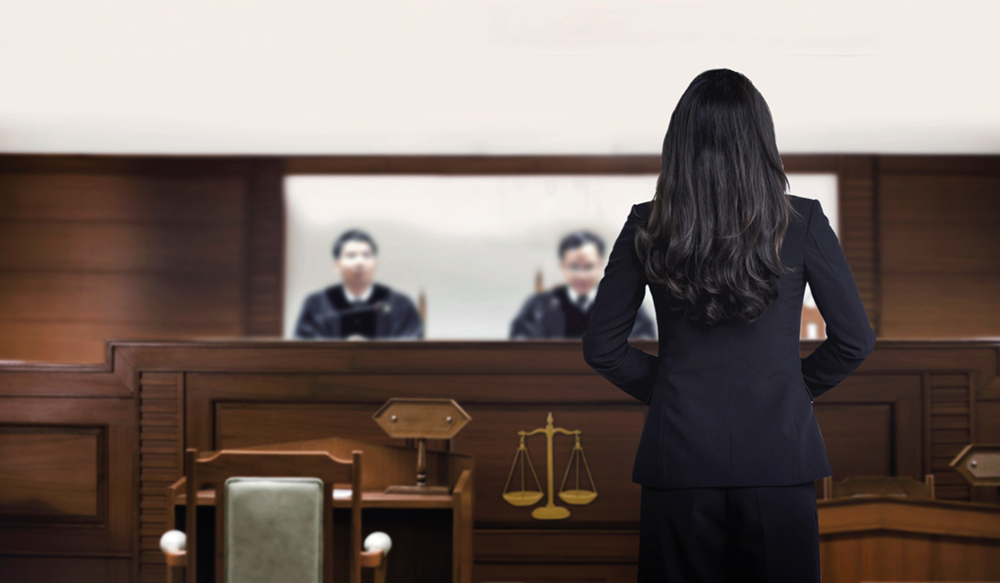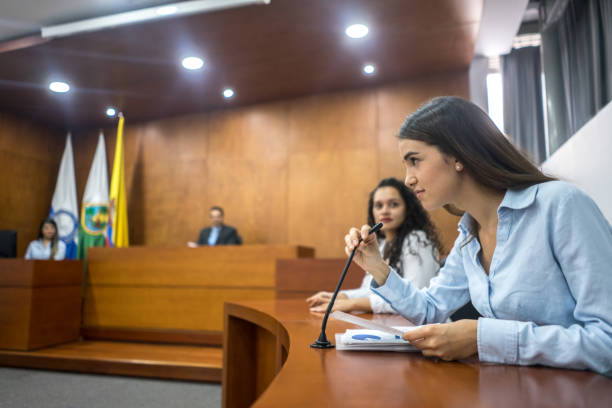Browsing the Complexities of Trial Presentations: Tips for Seamless Shipment and Compelling Debates
In the world of legal proceedings, the art of test presentation stands as a vital determinant of success. As lawyers browse the intricate web of court characteristics, the capability to seamlessly deliver disagreements and proof while captivating the court's attention becomes critical. The complexities intrinsic in test discussions call for a fragile balance of ability, technique, and skill. By sharpening techniques that make certain a polished shipment and crafting engaging debates that resonate with the audience, lawyers can significantly improve their campaigning for. In a world where persuasion preponderates, grasping the ins and outs of test discussions is not just an option but a requirement for those seeking to dominate in the court.

Understanding Test Goals
To effectively browse a test, it is essential to have a clear understanding of the objectives that require to be achieved. Prior to tipping into the court, legal groups should specify their goals and preferred results. These purposes function as assisting principles throughout the trial, forming techniques and influencing decision-making processes.
Comprehending trial objectives includes an extensive analysis of the case, legal precedents, and the customer's benefits. Trial Presentations. It needs a meticulous exam of the facts, identifying key problems, and preparing for potential obstacles. By setting measurable and specific objectives, attorneys can tailor their presentations and debates to align with the wanted results
Additionally, a clear grip of test purposes makes it possible for lawful groups to focus on evidence, witnesses, and lawful debates successfully. It permits the advancement of a systematic narrative that resonates with the court and court, reinforcing the total instance presentation.

Organizing Evidence Effectively
Having a clear understanding of trial purposes lays the structure for organizing proof effectively in legal proceedings. By straightening the presentation of evidence with the desired outcomes of the trial, legal groups can enhance their arguments and boost their persuasiveness.
An additional crucial element in arranging proof properly is developing a logical flow. Providing proof in a sequential and systematic way can assist develop a compelling story that sustains the legal debates being made. In addition, utilizing visual help such as timelines, charts, or graphes can even more enhance the company of evidence and assist in clarifying complicated partnerships or sequences of events.
Additionally, making sure that all proof presented is relevant and permissible to the situation is necessary. Inadmissible or pointless evidence can interfere with the strength of the debate and potentially harm the reliability of the here and now event. Consequently, a thorough evaluation and option process ought to be embarked on to consist of just the most impactful and lawfully sound proof in the test presentation.
Crafting Convincing Narratives
Crafting compelling stories plays a critical function in providing persuasive disagreements throughout lawful process. A well-crafted narrative has the power to captivate the target market, stimulate emotions, and eventually guide the choice for the providing celebration. When constructing a narrative for a trial presentation, it is essential to establish a clear storyline that highlights key points and links them in a systematic fashion. Begin by detailing the facts of the situation in an engaging fashion, making certain that the sequence of occasions is simple to adhere to. Introduce characters effectively, providing background information that assists the target market understand their motivations and activities. Furthermore, incorporating vivid summaries and engaging language can bring the narrative to life, making it a lot more memorable for the discretionary. By weaving together evidence, testament, and legal disagreements right into a convincing and natural narrative, attorneys can successfully support for their customers and enhance the possibility of a desirable result in the court.
Grasping Visual Aids
Reliable use visual aids is crucial to enhancing the impact and quality of trial discussions. Aesthetic aids, when utilized purposefully, have the power to streamline complicated details, enhance crucial points, and leave a lasting perception on the discretionary. To master visual help in test discussions, it is vital to ensure that they are clear, concise, and pertinent to the arguments being made.
When incorporating visual aids, such as graphes, pictures, charts, or timelines, right into a trial presentation, it is important to maintain them aesthetically appealing yet specialist. The visuals should complement the spoken debates, supplying a visual representation of the information being discussed without frustrating the target market with unnecessary you could check here information.
Moreover, experimenting the visual help in advance is imperative to guarantee a smooth shipment throughout the trial. Acquainting oneself with the content, changes, and timings of each aesthetic help can assist maintain the circulation of the discussion and prevent technological glitches that may develop.
Supplying Impactful Closing Disagreements
A compelling closing debate serves as the end result of a test presentation, enveloping the core narrative and persuading the judge and court in the direction of a positive choice. Begin by laying out the major arguments that sustain your customer's position, stressing why the evidence presented throughout the test sustains your narrative.
In addition, integrating emotional allure can better strengthen your closing argument. By attaching and humanizing the case on a personal degree with the decision-makers, you can stimulate empathy and understanding, affecting their understanding of the truths offered. In addition, stating the legal standards that must be satisfied for a beneficial judgment can strengthen the legitimacy of your position. Eventually, a well-crafted closing argument must leave a long-term perception, engaging the discretionary to rule in your customer's favor.
Conclusion
In final thought, grasping trial presentations involves understanding purposes, arranging evidence, crafting narratives, using visual help, and providing impactful closing disagreements. By implementing these techniques effectively, legal representatives can provide their situation flawlessly and make engaging arguments in the courtroom. It is crucial to browse the complexities of trial discussions with accuracy and ability to accomplish success in legal proceedings.
By lining up the presentation of evidence with the preferred outcomes of the test, lawful teams Get the facts can strengthen their disagreements and boost their persuasiveness (Trial Presentations). To understand aesthetic aids in trial discussions, it is crucial to guarantee that they are clear, concise, and relevant to the arguments being made
A compelling closing argument offers as the culmination of a trial presentation, encapsulating the core narrative and encouraging the judge and jury towards a positive choice. Begin by outlining the main disagreements that support your customer's setting, stressing why the proof provided throughout the trial supports your narrative.In final thought, understanding trial discussions entails understanding purposes, organizing proof, crafting stories, using aesthetic aids, and supplying website here impactful closing disagreements.